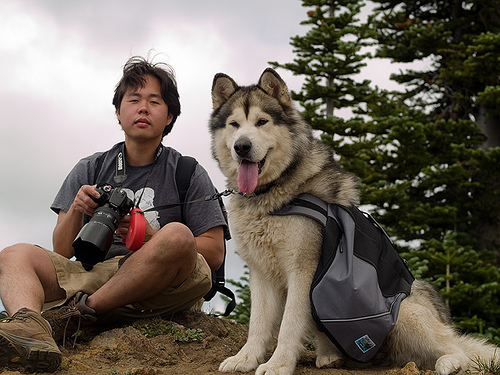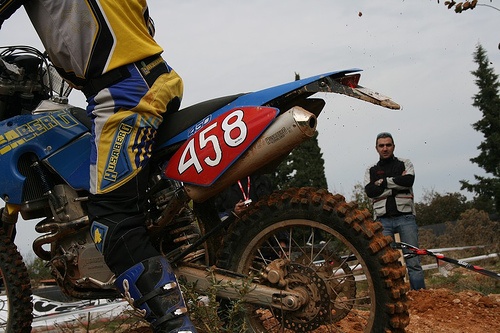Use Cases
HW Acceleration on Serverless deployments
Serverless Computing has gained significant ground over the past couple of years, especially due to its unprecedented "on-demand" computing offering at a fraction of the price of having a dedicated VM or bare-metal machine.
However, apart from the limitation that one has to re-write its application to match the Serverless computing paradigm (micro-service, event triggered), access to "specialized" equipement is not something common / supported now. Major serverless offerings such as AWS Lambda, Azure functions, or Google Functions do not offer access to hardware acceleration for even the most common tasks (ML inference).
To work around this issue, and study the implications of hardware acceleration in serverless computing we started experimenting on OpenFaaS and its integration with vAccel
Given OpenFaaS huge community support, installing it on a working k8s cluster is a piece of cake. You can find more information in the following document:
Assuming you have a working OpenFaaS installation, leveraging the hardware acceleration capabilities of your cluster with vAccel should be really straightforward.
Create a new OpenFaaS Profile
To take advantage of vAccel on Firecracker via OpenFaaS, all you have to do, is tell OpenFaaS to spawn the relevant functions using a different profile.
To allow maximum flexibility without overloading the OpenFaaS function
configuration, the OpenFaaS developers have introduced the concept of Profiles.
This is simply a reserved function annotation that the faas-provider can
detect and use to apply the advanced configuration.
Profiles must be pre-created, similar to Secrets, by the cluster admin. When installing OpenFaaS on Kubernetes, Profiles use a CRD. This must be installed during or prior to start the OpenFaaS controller. When using the official Helm chart this will happen automatically. Alternatively, you can apply this YAML to install the CRD.
So, let's create a hardware acceleration profile on our OpenFaaS installation!
As mentioned earlier in the docs, to deploy vAccel-able workloads on a k8s
cluster we have to follow the relevant instructions.
Essentially, we leverage the awesome work done by the kata-containers team
and provide an alternative to the generic Firecracker RuntimeClass, kata-fc.
So, assuming you have a working cluster with vAccel installed on k8s, all you need to do to run an OpenFaaS function there is to create a Profile:
kubectl apply -f- << EOF
kind: Profile
apiVersion: openfaas.com/v1
metadata:
name: gvisor
namespace: openfaas
spec:
runtimeClassName: kata-fc
EOF
Build an image classification function example
Then, we need to build a function that consumes the vAccelRT API, as exposed to the available functions. Check out this repo to get an idea of how easy it is to create a function that classifies images ;-)
git clone https://github.com/nubificus/stdinout -b vaccel
cd stdinout
Examine test.c: it is a simple file that gets its input from stdin, stores it
into a memory buffer and pushes it to be classified, using the vAccel API. The
output is a string of the classification label, along with the accuracy given
by the specific model used. Lets build this simple function:
make
The output of this command is an executable that given an image from STDIN
will output the classification text, consuming the vAccel API. More or less,
something like the following:
# Set the library path to ./ for libfileread.so and
# /usr/local/lib for libvaccel.so
export LD_LIBRARY_PATH=./:/usr/local/lib
# set the vAccel Backend (running on an RTX 2060 Super
export VACCEL_BACKENDS=/usr/local/lib/libvaccel-jetson.so
cat dog_0.jpg | ./test
Given the input is the file below:

the output should be something like the following:
Initialized session with id: 1
imagenet: 60.54688% class #249 (malamute, malemute, Alaskan malamute)
classification tags: 60.547% malamute, malemute, Alaskan malamute
Integrate this operation into a function for OpenFaaS
To integrate this into a function, we first need to build a container image, with the libvaccel library along with the vAccel-virtio backend (Since this workload is going to be running on a Firecracker VM ;-).
docker build -t nubificus/fclassify -f Dockerfile.virtio .
Then, a simple YAML like the following (fclassify.yaml) will instantiate a
function that will execute the fprocess: directive, in our case, test:
provider:
name: openfaas
gateway: http://myclusternode:31112
functions:
fclassify:
skip_build: false
image: nubificus/fclassify
fprocess: "/test"
annotations:
com.openfaas.profile: kata
labels:
com.openfaas.scale.min: 12
com.openfaas.scale.max: 100
com.openfaas.scale.factor: 40
limits:
cpu: 10m
requests:
cpu: 10m
The important parts to note at this YAML file are:
com.openfaas.profile: kata
which makes sure that the function will be invoked on the kata profile, using the kata-fc RuntimeClass (which supports vAccel).
and
image: nubificus/fclassify
fprocess: "/test"
which denotes that the image to be used is nubificus/fclassify, built earlier
using Dockerfile.virtio, with /test being the entrypoint.
Deploy the function
Finally, using the command below:
faas-cli deploy -f fclassify.yaml
will instatiate the number of replicas chosen for fclassify as well as listen to requests for image classification, ready to forward them to the actual hardware securely and efficiently!
Consume the function
Given an ingress rule that will route traffic to the fclassify function, we can invoke this operation externally. For instance, given the following three images:



we can invoke the OpenFaaS function on our local K8s OpenFaaS cluster:
for x in object_0.jpg object_2.jpg object_3.jpg
do
cat $x | curl -L -X POST https://openfaas.nbfc.io/function/fclassify \
--data-binary "@$x" &
done
and the output should be:
[1] 3129602
[2] 3129604
[3] 3129606
Initialized session with id: 1
classification tags: 23.145% mountain bike, all-terrain bike, off-roader
Initialized session with id: 1
classification tags: 45.776% freight car
Initialized session with id: 1
classification tags: 90.771% canoe